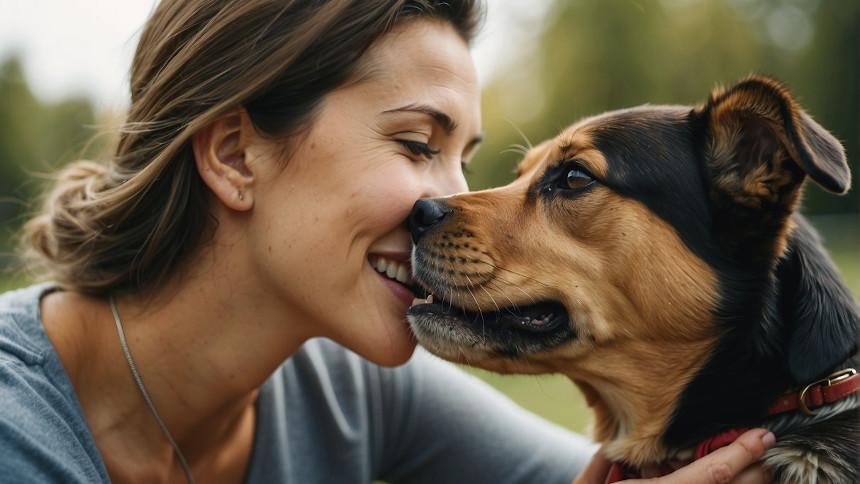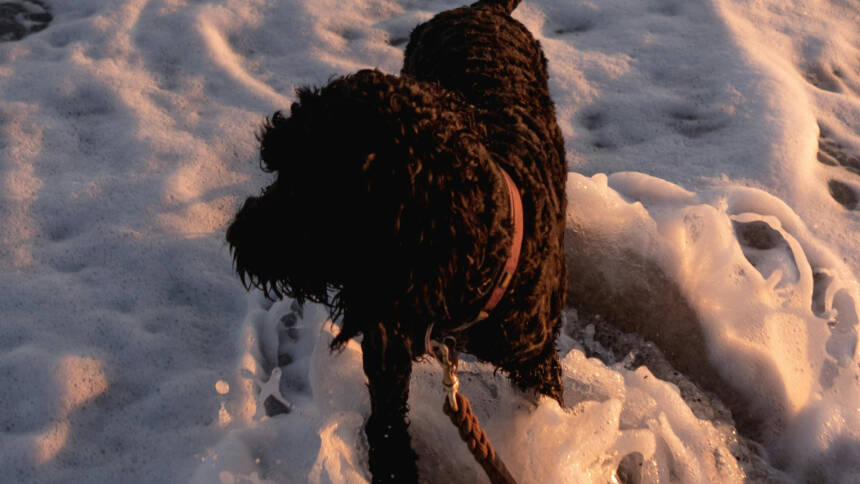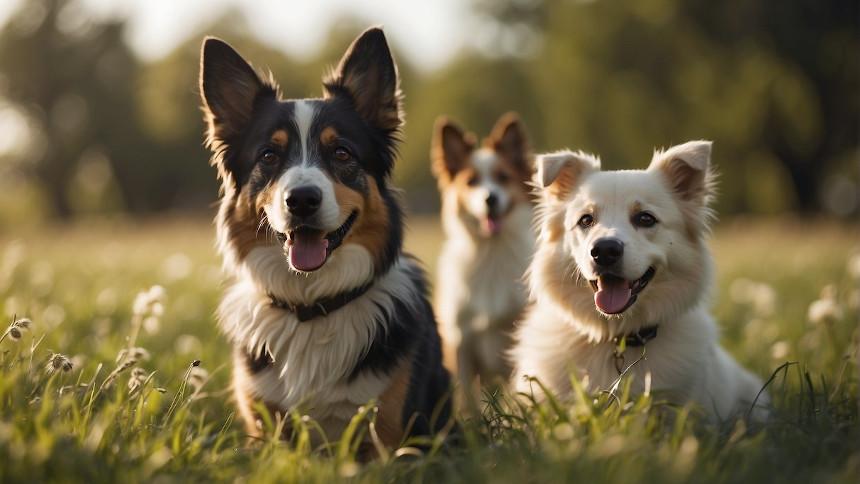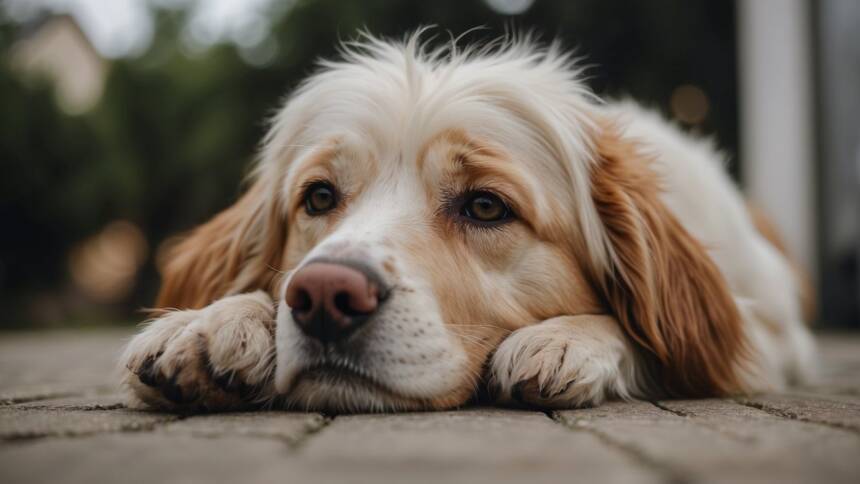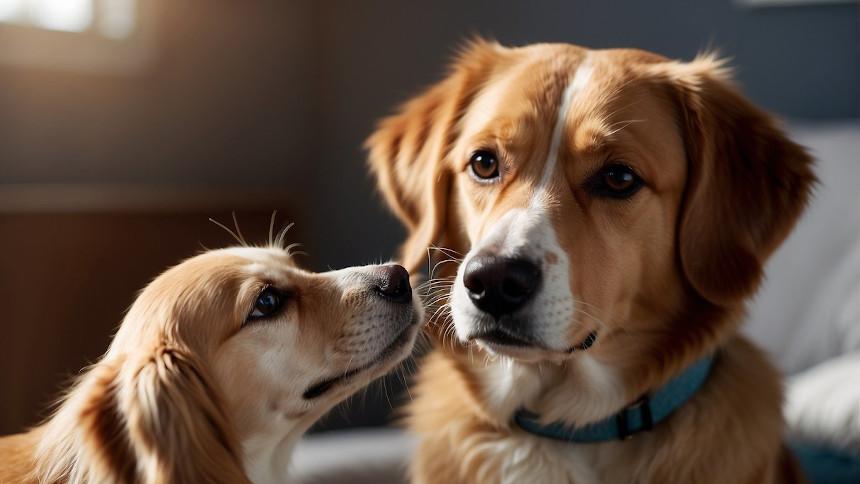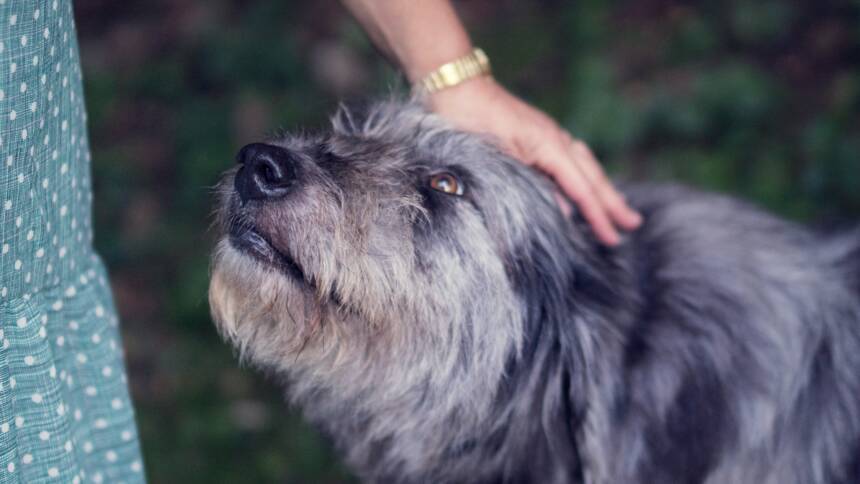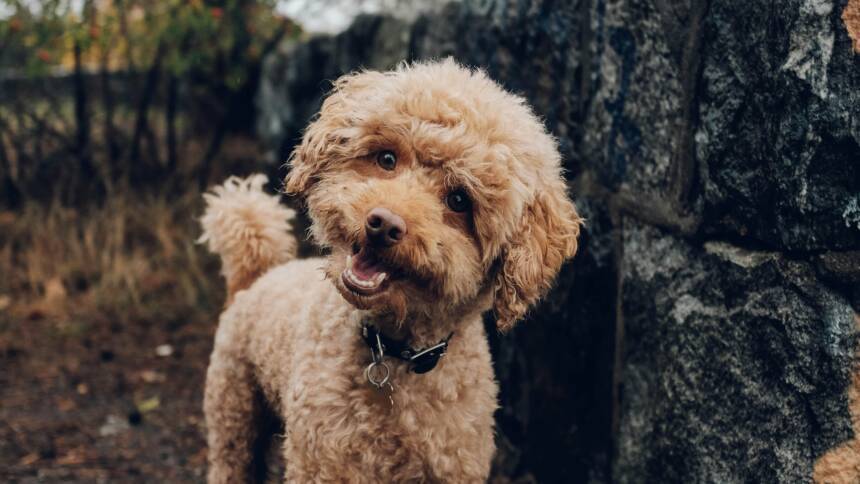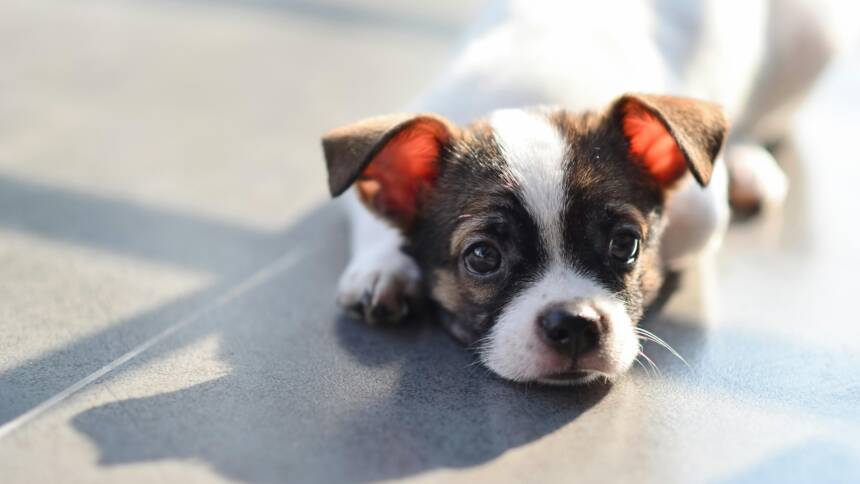Dog owners often find themselves the subject of their pet’s affectionate licks. This licking behavior is normal and has roots in the evolutionary history of canines. It serves various purposes from social bonding to communication. For instance, in the wild, wolf pups lick the mouths of adult wolves to stimulate the regurgitation of food, a behavior that some domestic dogs still exhibit today. Licking can also be a dog’s way of showing affection or seeking attention from their human companions.
However, when a dog constantly licks their owner, it can be a sign of underlying issues. Dogs may excessively lick people due to reasons such as anxiety, boredom, or health problems like allergies or skin conditions. It’s important for dog owners to understand the differences between normal licking and excessive or compulsive licking that might require intervention. Recognizing these can be the first step in addressing any potential problems and ensuring the well-being of their canine friend.
Behavioral training can help manage a dog’s licking, teaching them alternative ways to seek attention or self-soothe. In cases where licking is excessive and persistent, consulting a veterinarian or a professional dog trainer may be necessary to rule out medical conditions or to address potential behavioral concerns. This helps in creating a healthy relationship between the dog and its owner, ensuring the pet’s licks remain a sign of affection rather than a nuisance or symptom of an issue.
Canine Behavior and Communication
Dogs communicate with their human companions and other animals through a variety of behaviors, and licking is a significant part of their social interactions. Licking serves multiple purposes in the realm of canine communication. Primarily, it is seen as a sign of affection. In a dog’s world, this gentle action is often a way to strengthen social bonds and show submissiveness or respect to their owner or other dogs.
Attention-seeking is another reason why dogs lick. They quickly learn that their human counterparts respond positively to licking, which becomes associated with social rewards like petting or verbal praise. A dog may lick to convey their wish to play or simply to engage their owner’s attention.
Dogs also lick as a sensory tool; their tongues are exploratory instruments. By licking people, dogs receive information about that person’s emotional state, health, or even what they’ve eaten recently. This behavior stems from their ancestral instincts where mother dogs lick their puppies to groom them and stimulate their bodily functions.
Below is a brief breakdown of key reasons behind dog licking:
- Affection: Licking is a dog’s love language.
- Communication: Licking can indicate submissiveness or greetings.
- Sensory Exploration: Dogs taste their environment and gather information.
- Attention: Licking can be a request for interaction or play.
Understanding these aspects of dog behavior is essential for pet owners to interpret their furry friends’ licks accurately. It’s a way for dogs to express their feelings, whether it’s joy at their owner’s return or a desire for closeness and attention.
Health and Medical Factors
In assessing why a dog is constantly licking their owner, it is crucial to consider potential health and medical factors that may be driving this behavior. These factors can range from discomfort due to medical conditions to skin issues and digestive problems. It is important to note that while some licking is normal, excessive licking warrants further investigation.
Identifying Discomfort
A dog may lick excessively in an attempt to alleviate an underlying pain or discomfort. Conditions such as osteoarthritis, muscle injuries, or even fractures can lead to licking behavior as the dog tries to cope with the pain. In such cases, a vet may prescribe medication for pain management and suggest modifications to the dog’s environment to help ease discomfort.
Skin Conditions and Allergies
Various skin conditions and allergies can provoke a dog to lick incessantly. Often, dogs with allergies will lick their skin due to itchiness. The presence of external parasites like fleas or mites, fungal or bacterial infections, or hot spots can also lead to licking. Treatment might include:
- Medications: antihistamines, steroids, or topical ointments.
- Regular grooming: to prevent skin irritations.
- Environmental changes: such as hypoallergenic bedding.
Digestive Issues
A dog’s licking behavior may be associated with digestive issues. Conditions like nausea or gastrointestinal discomfort can cause a dog to lick various surfaces or themselves excessively. Owners should look for signs such as:
- Change in appetite
- Vomiting or diarrhea
In case of such symptoms, it is vital for the dog to have a veterinary examination to determine if a digestive problem is present and to receive appropriate treatment.
Psychological Aspects of Licking
Dogs often use licking as a way to communicate and express their psychological state. This behavior can range from a sign of affection to an indication of an underlying behavioral disorder.
Emotional State
A dog’s emotional state can greatly influence its licking behavior. For example, anxiety or separation anxiety may lead a dog to lick its owner more frequently as a means of seeking comfort or reassurance. Licking can be a soothing action that relieves stress for a dog, much like how humans may bite their nails or fidget when nervous.
Behavioral Disorders
In some cases, compulsive licking can be symptomatic of a behavioral disorder. Obsessive-Compulsive Disorder (OCD) in dogs manifests through repeated, invariant behaviors, which can include problem licking. If a dog is incessantly licking without apparent cause, it may be displaying compulsive behavior, which is an urge to perform certain actions repeatedly to an extent that is not considered normal. Boredom can also drive compulsive licking, as dogs will sometimes lick as a habitual response to a lack of stimulation.
Training and Habit Formation
Training plays a crucial role in managing a dog’s licking behavior. Dog owners can implement positive reinforcement to encourage appropriate behavior, where dogs are rewarded for desired actions. When a dog licks, they often do so for a variety of reasons such as seeking attention, expressing affection, or as a remnant of the ancestral behavior to regurgitate food for their young.
Positive Reinforcement Techniques
- Reward Alternate Behavior: Reward dogs when they engage in non-licking activities like sitting calmly.
- Use Commands: Teach commands like “Stop” or “No lick” and reward the dog for obeying.
Rectifying the Licking Habit
- Consistent Response: Always respond the same way to licking, so the dog learns the association.
- Move Away: If the dog licks for attention, calmly move away to signal that licking does not yield attention.
Understanding Why Dogs Lick
Acknowledging the reasons dogs lick can inform training approaches. Habit formation, including licking, may develop as an attention-seeking behavior or through inadvertent reinforcement from owners. It’s important that owners understand the underlying motivations to effectively redirect and train their dogs.
Key Practices for Habit Formation
- Routine: Establish a routine that gives the dog plenty of activities and less reason to lick for attention.
- Ignore: Ignore licking to prevent reinforcing it as an attention-getting habit.
Ultimately, patience and consistency are imperative in training dogs to form or break a licking habit. Through understanding and positive reinforcement, owners can guide their dogs toward more desirable behaviors.
Interactive Care and Exercise
When a dog persistently licks their owner, it may signal a need for more interactive care and exercise. Dogs are highly social animals that thrive on engagement with their environment and their human companions. Adequate exercise is instrumental in ensuring a dog’s physical and mental well-being. Long walks, runs, and playtime in a secure area can help dispense their energy and curb attention-seeking behaviors, including excessive licking.
Incorporating grooming into a dog’s routine offers benefits beyond a shiny coat. Regular brushing can be a bonding experience and a soothing activity that reduces the desire for constant licking as a form of interaction.
Interactive care also encompasses the use of tools to redirect and manage a dog’s licking habit. Lick mats, specifically designed rubber mats with textures that can hold soft foods, can occupy a dog’s time and provide a satisfying alternative to licking their owner. They promote calmness and enjoyment, especially during otherwise stressful times.
Here is a simple list of interactive care strategies for dog owners:
- Regular Exercise:
- Daily walks (30-60 minutes)
- Interactive games (fetch, tug-of-war)
- Agility training or dog sports
- Grooming Sessions:
- Consistent brushing routine
- Calm, positive reinforcement during grooming
- Lick Mats & Toys:
- Use during bathing or grooming
- Fill with pet-safe treats or spreads
- Encourage use when exhibiting licking behavior
Understanding dog behavior underpins effective interactive care. Dog owners seeking to decrease their pets’ licking should consider these strategies, which could alleviate the behavior by addressing its root causes.
